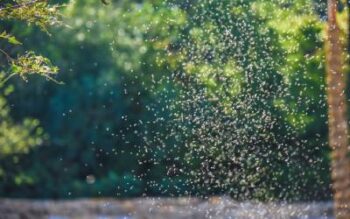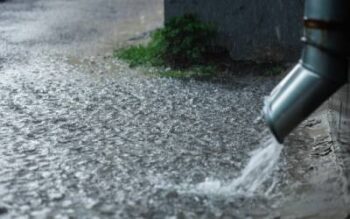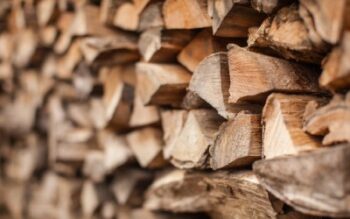There are more than 3,000 types of spiders found in North America alone. However, you are more likely to encounter some in your home than others, including the house spider and brown recluse spider.
House Spiders
The most common spider is a house spider. It is a nuisance pest, probably more because of its webs than the spider itself.
Prevent spiders by following these tips:

- Store clothes and shoes inside plastic containers.
- Wear leather work gloves when moving things that have been stored for a long time.
- When making your bed, make sure that none of the sheets or blankets are hanging to the ground, making easy access to the bed.
- In areas of low traffic vacuum all spider webs and dispose of immediately.
- Seal cracks around the outside of the house using a silicone-based caulk.
Brown Recluse Spiders
A common misconception of the brown recluse spider is that it has a much wider range in the United States than it actually does. These spiders are only found in the Southwest and lower part of the Midwest. Unfortunately, Kansas is included in this area.
What’s the difference?
Here are a few ways to tell the difference between a brown recluse spider and a common house spider:
Brown Recluse Spider:
- Legs are brown without markings and are long and slender in proportion to the body
- Second pair of legs are the longest
- Color can range from pale yellow to dark reddish-brown
- A dark violin shape behind its head with the neck of the violin pointing toward the abdomen
- Six eyes arranged in pairs in a semicircle on the forepart of the head, or cephalothorax
Common House Spider:
- Front legs are the longest
- Legs are long and thin in proportion to its body
- 3/16 – 5/16“ (female) 1/8 – 3/16” (male)
- Yellowish brown, abdomen dirty white with several dark stripes meeting at angle
- Eight eyes with two lateral pairs almost touching
The bite of a brown recluse spider is usually not felt, but it may produce an immediate stinging sensation followed by intense pain or this reaction may be delayed for 6-8 hours. In addition, a small blister usually appears and the surrounding bite area becomes swollen. The dead tissue sloughs away during the next 10-14 days. Call a physician or go to an emergency room immediately if bitten, and take the spider along for identification purposes.
If you find a brown recluse spider or suspect or discover a spider infestation on your property, call us at 1-800-784-8287 to properly assess the situation and develop a plan of action. You can also download our DIY Pest Guide to learn more about spider prevention and treatments.



